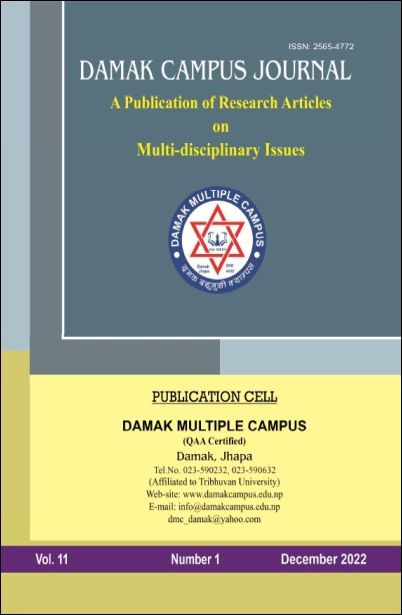Cultural Confrontations and its Impacts in Henry James' Daisy Miller
DOI:
https://doi.org/10.3126/dcj.v11i1.63479Keywords:
culture, privacy, individualism, taboo, shock, vulgar, clashAbstract
Everyone stands on his / her own ground absorbing own shadow. This shadow always stands amid us and it has more or less influences on our being. This shadow, in fact, is culture; the set of thoughts, rules, norms, and values that the people assimilate in the particular place and time; and this most ambiguous term is culture. As a matter of fact, literary study is understood as 'cultural study'. The most inevitable issue of culture is its differences. The differences appear in the disguise of shock, clash, collision, confrontation, differences and cultural dimensions
This article proposes the bicultural study of America and Europe through the American visitors in Europe and cultural clash in Henry James’s narrative novella Daisy Miller. The characters of this novella young Daisy Miller, her brother Randolph Miller and her mother Mrs. Miller culturally confront while visiting Europe. They embody both tradition and translation; and fail to assimilate themselves in the 'host land'. Within tradition, they represent American culture, visible in the kind of cultural proximity they establish, as Daisy establishes with Winterbourne. Within translation, they try to reflect European culture, symbolized by the sort of affective relationship they keep, as Daisy keeps with young Italian Giovanelli. As migrant selves, they are able to conciliate Schenectady and Vevey, they transform tradition and translation into cultural identities that mutually nurture one another in spite the fact that they are judged vaguely through the European eyes.




